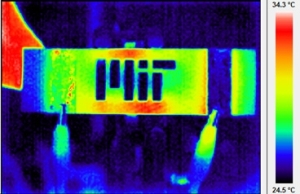Brian L. Wardle, associate professor of aeronautics and astronautics, department of electronics at MIT, says if aluminium is hit, it shows a dent, but when a composite is hit, it does not show any dent, though an internal damage may have occurred.
Airplane manufacturers have started using composites of high-strength fibres, such as carbon or glass, integrated in a plastic or metal matrix to construct aircraft. These materials are strong and lightweight, but it is difficult to detect internal damages in case of impacts

The team of researchers led by Wardle has discovered a technique to help identify internal damage with a simple portable system and a camera that is sensitive to heat-. The composites comprise carbon nanotubes, to produce heat essential for the test. The research paper has been published in the online March 22 issue of the journal Nanotechnology. The solution will help airlines check their aircraft rapidly. This multiple year project has been financed by the aerospace industry in an effort to enhance the mechanical features of aerospace-grade composites. The team is endeavoring to deploy the technology in aircraft and vessels belonging to the US Air Force and Navy. The nano-materials can also be used in the construction of cars, bridges and wind-turbine blades.
Up until now, infrared thermography, which identifies infrared radiation caused by the surface being heated, can help detect internal damage. If the layers of the composite are separated or form cracks. The heat flow will be redirected. A thermographic camera will capture images of such unnatural flow pattern. But this method needs huge industrial heaters to be kept alongside the surface. The team has integrated carbon nanotubes in the composite. A nano-curent of electricity is applied to the surface, causing the nanotubes to heat up. This removes the need for external heaters. The damage will be visible using a thermographic camera. The technology deploys carbon nanotube features to provide an internal source of heat, according to Douglas Adams, associate professor of mechanical engineering at Purdue University.
Source http://web.mit.edu/